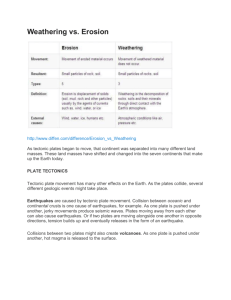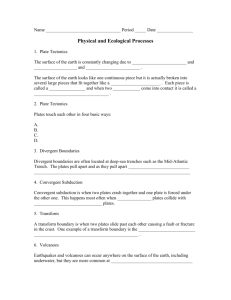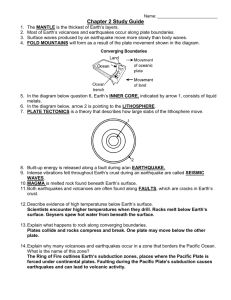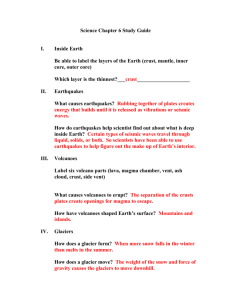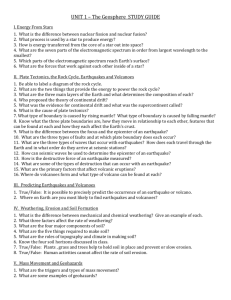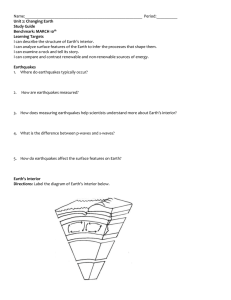2.2 Notes
advertisement
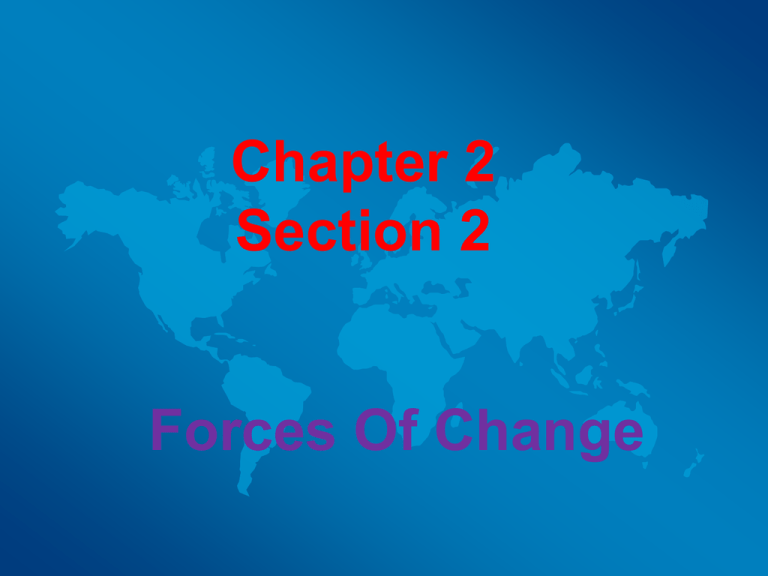
Chapter 2 Section 2 Forces Of Change • In 1906 the booming city of San Francisco was destroyed by an earthquake that measured 8.6 on the Richter scale. Over 400 people were killed, and 28,000 buildings were reduced to rubble. Another slightly less forceful earthquake struck the city in 1989, doing far less damage and claiming 67 lives. Most people remember it because it interrupted the World Series for 12 days while damages were repaired in Oakland and San Francisco. Earth’s Structure • A Layered Planet The earth is composed of three layers: the core, the mantle, and the crust. - The inner core is about 4,000 miles (about 6,430 km) below the surface. - The outer core is about 1,400 miles (about 2,250 km) thick. - Both are made of iron and nickel. - The mantle is made of hot, dense rock. - It releases 80 percent of the heat generated from the earth’s interior. Plate Movement •Many scientists believe that all the continents once were joined and have broken apart and drifted. This theory is called continental drift. • Plates move gradually. As they move, they come together and pull apart. • This movement pushes up mountains, creates volcanoes, and produces earthquakes. • These activities are called plate tectonics. 2.1 explain internal and external physical forces that impact Earth Colliding and Spreading Plates • One way that mountain ranges form is in a process called subduction, when a sea plate collides with and dives beneath a continental plate. • Continents grow in a process called accretion, when pieces of the earth’s crust come together slowly as a sea plate slides under a continental plate. • When two sea plates collide, they may create a chain of islands. Folds and Faults • When plates squeeze the earth’s surface, they create folds or bends in layers of rock. When the layers grind or slide past each other, they create cracks known as faults. Earthquakes •Sudden, violent movements along the fault lines are called earthquakes. • The Ring of Fire is a zone of earthquake and volcanic activity surrounding the Pacific Ocean. • Cities in this area, like San Francisco and Los Angeles, are prone to severe earthquakes. Volcanic Eruptions • Volcanoes are mountains formed by magma that has broken through the earth’s crust. • Volcanoes often rise along plate boundaries. • They also occur when especially hot places deep inside the earth blast their magma to the surface. External Forces of Change Weathering • Physical weathering occurs when large masses of rock are broken down into smaller pieces. Chemical weathering changes the chemical composition of rocks. Wind Erosion • The movement of dust, sand, and soil from one place to another is called wind erosion. • It can devastate some areas and bring mineral riches to the soil in other places. Glacial Erosion • Glaciers are large bodies of ice that move slowly across the earth’s surface. • As they move, they carry along rocks and soil. • Sheet glaciers are flat, broad sheets of ice. • Mountain glaciers are located in high mountain valleys. Water Erosion • Rain, rivers, streams, and oceans wear away soil and rock in a phenomenon called water erosion. • Water erosion often forms valleys and canyons.
